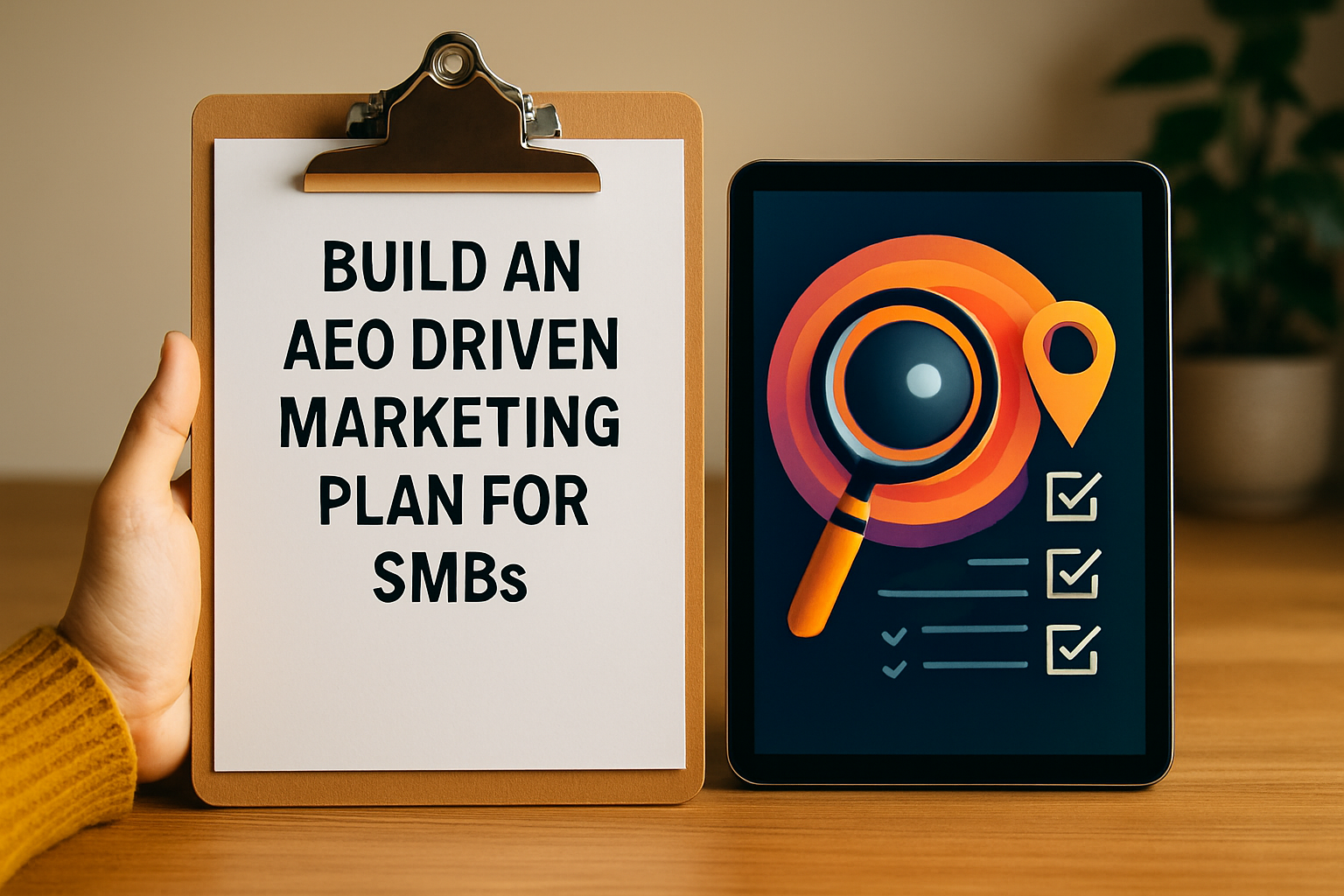7 Essential Lead Conversion Best Practices for 2023

Every business craves more leads, but turning those leads into paying customers feels like chasing a moving target. Most marketing campaigns miss the mark and leave money on the table. Yet, personalized, targeted offers can actually increase conversion rates by up to 40 percent. The real surprise is that small changes in how you connect with your audience can multiply your results far beyond what massive ad budgets ever could.
Table of Contents
- Understand Your Target Audience
- Create Compelling Offers
- Optimize Your Landing Pages
- Use Effective Call To Actions
- Nurture Leads With Email Marketing
- Use Social Proof And Testimonials
- Analyze And Refine Your Strategy
Quick Summary
| Takeaway | Explanation |
|---|---|
| Understand your audience deeply | Conduct thorough audience research to create detailed personas capturing motivations and pain points. |
| Craft compelling, tailored offers | Develop value propositions that directly address specific customer problems, highlighting clear benefits and urgency. |
| Optimize landing page design | Create distraction-free, mobile-responsive landing pages with a strong value proposition and clear calls to action. |
| Leverage effective call to actions | Use action-oriented language and psychological triggers to encourage immediate engagement, placing CTAs strategically. |
| Utilize social proof and testimonials | Showcase genuine customer success stories and measurable results to enhance credibility and trust. |
1: Understand Your Target Audience
Successful lead conversion starts with a deep understanding of your target audience. Without knowing precisely who you’re trying to attract and engage, your marketing efforts will feel scattered and ineffective. Audience research is the cornerstone of strategic lead generation.
To effectively map out your target audience, you need to go beyond basic demographic information. Harvard Business Review suggests creating comprehensive audience personas that capture not just age and location, but deeper psychological motivations and pain points.
Your audience research should include critical insights like:
- Specific professional challenges they frequently encounter
- Primary goals and aspirations
- Communication preferences and channels they trust
- Decision making patterns and purchasing behaviors
Digital marketing experts recommend developing multi dimensional audience profiles that reveal underlying needs. This means understanding not just who your potential leads are, but what drives their decisions. Are they seeking efficiency? Cost savings? Professional recognition?
Nielsen Norman Group emphasizes that effective audience understanding requires continuous research and adaptation. Markets evolve, and so do customer expectations. Regular surveys, feedback mechanisms, and analytics review will help you maintain an accurate picture of your target demographic.
By investing time in comprehensive audience research, you transform lead conversion from a numbers game into a strategic, targeted approach. Your marketing messages will resonate more deeply, your conversion rates will improve, and you’ll build more meaningful connections with potential clients.
2: Create Compelling Offers
Creating compelling offers is more than just presenting a product or service. It is about crafting a value proposition that solves specific problems and speaks directly to your potential customer’s needs.
Content Marketing Institute suggests that successful offers must address three critical elements: relevance, perceived value, and clear benefits. Your offer needs to demonstrate why someone should choose your solution over alternatives.
To develop truly compelling offers, consider these strategic approaches:
- Design solutions that solve specific, measurable customer problems
- Create time sensitive or exclusive opportunities that generate urgency
- Articulate unique value that differentiates you from competitors
The psychology of offer creation involves understanding customer pain points and matching them with precise solutions. For instance, instead of simply selling a service, frame your offer as a pathway to achieving specific business goals or overcoming recognized challenges.
McKinsey & Company research indicates that personalized, targeted offers can increase conversion rates by up to 40%. This means moving beyond generic messaging and developing tailored propositions that speak directly to individual customer segments.
Your offer should also demonstrate immediate and tangible value. Potential leads want to understand exactly what they will gain. Use clear, concrete language that highlights specific outcomes. Avoid vague promises or complicated jargon that might confuse or discourage potential customers.
Remember, a compelling offer is not just about the product itself, but about the transformation or solution it provides. The most effective offers connect emotionally and rationally with your target audience’s deepest professional aspirations and challenges.
3: Optimize Your Landing Pages
Landing pages are your digital storefront, and their design can make or break lead conversion. A well-crafted landing page transforms casual visitors into potential customers by creating a clear, compelling pathway to engagement.
Unbounce research reveals that the average landing page conversion rate across industries is approximately 4.4%. However, top-performing pages can achieve conversion rates as high as 25% through strategic optimization.
Key elements of high performing landing pages include:
- Crystal clear value proposition displayed prominently
- Minimal, distraction free design
- Strategically placed call to action buttons
- Mobile responsive layout
- Fast loading speeds
Visual hierarchy matters dramatically in landing page design. Users typically scan pages in an F shaped pattern, so critical information must be placed where eyes naturally travel. Your headline, subheadline, and primary call to action should align with this natural reading pattern.
Google PageSpeed Insights emphasizes that page loading speed directly impacts conversion rates. A delay of even one second can reduce conversions by 7%. This means optimizing images, minimizing code, and ensuring rapid server response times are crucial for maintaining visitor interest.
Psychological triggers can significantly enhance landing page effectiveness. Use social proof like customer testimonials, trust badges, and real world success stories. These elements build credibility and reduce potential leads’ perceived risk.
Remember that simplicity trumps complexity. Your landing page should guide visitors toward a single, clear action. Remove unnecessary navigation elements, minimize form fields, and create a focused experience that makes converting feel effortless and intuitive.
4: Use Effective Call to Actions
Call to actions are the critical bridge between audience interest and actual conversion. They transform passive engagement into active participation, guiding potential leads toward taking meaningful steps.
ConversionXL highlights that effective CTAs go far beyond simple button text. They are psychological triggers designed to create immediate, compelling motivation.
Key principles for crafting powerful call to actions include:
- Use action oriented, energetic language
- Create a sense of urgency
- Make buttons visually distinct
- Position CTAs strategically on the page
- Match CTA language with audience expectations
Psychological triggers make CTAs more compelling. Words like “now,” “free,” and “instant” tap into fundamental human desires for immediate gratification and low risk opportunities. The goal is to reduce perceived effort and maximize potential reward.
Neil Patel suggests that personalization dramatically improves CTA performance. Instead of generic phrases like “Submit,” use specific, benefit driven language such as “Get My Free Strategy Guide” or “Unlock My Business Growth Plan”.
Color psychology plays a significant role in CTA effectiveness. High contrast colors that stand out from the page background can increase visibility and clickthrough rates. Typically, colors like orange, green, and blue generate strong psychological responses and drive action.
The placement of your call to action matters as much as its design. Strategic positioning increases the likelihood of conversion. Place CTAs where they naturally fit within the user’s reading flow, typically after presenting a compelling value proposition or solving a specific problem.
Ultimately, an exceptional CTA speaks directly to your audience’s desires, reduces perceived friction, and makes taking the next step feel like an obvious, low risk decision.
5: Nurture Leads with Email Marketing
Email marketing remains a powerhouse for lead conversion, offering direct communication and personalized engagement with potential customers. When executed strategically, email nurturing transforms cold leads into warm prospects ready to make purchasing decisions.
Campaign Monitor reports that segmented email campaigns can generate up to 760% increase in revenue compared to generic broadcast emails. This underscores the importance of targeted, personalized communication.
Effective email lead nurturing strategies include:
- Segment your email list based on specific interests
- Create personalized content sequences
- Implement automated drip campaigns
- Track and analyze email engagement metrics
- Design mobile responsive email templates
Personalization is the key to successful email marketing. Generic, one size fits all messages get ignored. Modern leads expect communications that speak directly to their specific challenges, goals, and interests.
HubSpot indicates that personalized email subject lines can increase open rates by 26%. This means moving beyond basic name insertion and crafting truly relevant content that resonates with each segment of your audience.
Timing and frequency are critical components of email nurturing. Bombarding leads with daily emails will trigger unsubscribes, while sporadic communication leads to disengagement. The sweet spot is consistent, valuable communication that provides genuine insights and solutions.
Successful email marketing goes beyond selling. It is about building trust and establishing your expertise. Each email should provide actionable value, whether through industry insights, problem solving strategies, or educational content that positions your brand as a trusted advisor.
Remember that every email is an opportunity to demonstrate your understanding of potential customers’ needs and your capacity to solve their specific challenges.
6: Use Social Proof and Testimonials
Social proof is the psychological phenomenon that makes potential customers trust your brand through external validation. When prospects see others succeeding with your solution, their purchasing hesitation dramatically decreases.
Nielsen research demonstrates that 92% of consumers trust recommendations from other people over traditional advertising. This makes social proof a critical component of effective lead conversion strategies.
Strategic approaches to leveraging social proof include:
- Display authentic customer success stories
- Share quantifiable results and metrics
- Feature testimonials from recognizable industry professionals
- Showcase client logos and brand partnerships
- Highlight third party awards and recognitions
Testimonials work best when they are specific and results oriented. Generic praise like “great service” carries little weight. Potential leads want to hear concrete outcomes, such as “Our revenue increased 45% after implementing their strategy.”
Psychology Today explains that social proof triggers our inherent tribal instincts. Humans are naturally inclined to follow behaviors demonstrated by peers, making testimonials powerful conversion tools.
Video testimonials can be particularly compelling. Seeing genuine emotions and hearing real stories creates a more profound connection than written text. When possible, include client video testimonials that showcase authentic experiences and tangible results.
Remember that credibility is paramount. Fake or overly polished testimonials will backfire. Prospects can sense inauthentic content, so prioritize genuine, verifiable social proof from actual clients who represent your target market.
Effective social proof transforms your marketing from self promotion to third party validation, significantly reducing perceived risk for potential leads.
7: Analyze and Refine Your Strategy
Continuous improvement is the cornerstone of successful lead conversion. Without systematic analysis and strategic refinement, even the most robust marketing approaches will eventually become stagnant.
Google Analytics provides powerful tools for tracking and understanding lead conversion performance. Regularly monitoring key metrics allows businesses to make data driven decisions that incrementally improve results.
Critical metrics to track and analyze include:
- Conversion rate per marketing channel
- Cost per lead acquisition
- Average time from lead capture to conversion
- Lead source effectiveness
- Customer lifetime value
Data interpretation requires a nuanced approach. Raw numbers tell only part of the story. Successful marketers understand the context behind metrics, identifying not just what happened, but why it occurred.
McKinsey research suggests that companies utilizing advanced analytics can increase their marketing productivity by 15 to 20 percent. This means moving beyond surface level metrics to deep, actionable insights.
A/B testing becomes crucial in strategy refinement. By systematically testing different elements like headlines, call to actions, and email subject lines, you can incrementally improve conversion rates. Small 2 3% improvements compound into significant gains over time.
Regular strategy audits help prevent marketing fatigue. Customer preferences and market dynamics constantly evolve. What worked six months ago might be less effective today. Implement a quarterly review process to reassess your lead conversion approach.
Remember that analysis is not about perfection, but continuous learning. Each data point is an opportunity to understand your audience better and create more targeted, effective lead conversion strategies.
Below is a comprehensive table summarizing the seven essential lead conversion best practices covered in the article, with key actions and benefits for each step.
| Best Practice | Key Actions | Benefits |
|---|---|---|
| Understand Your Target Audience | Conduct deep audience research and create thorough personas with motivations, pain points, and preferences | Enables tailored messaging, improves lead targeting |
| Create Compelling Offers | Develop value propositions addressing specific problems, add urgency, and highlight unique benefits | Higher perceived value, greater differentiation |
| Optimize Landing Pages | Use clear value propositions, distraction-free design, strategic CTA placement, mobile responsiveness, and fast loading speeds | Increases conversions through user-friendly experience |
| Use Effective Call to Actions | Utilize action-oriented language, urgency, benefit-focused phrasing, and strategic positioning | Drives immediate engagement, raises clickthrough rates |
| Nurture Leads With Email Marketing | Segment lists, personalize content, use drip campaigns, track engagement, and provide consistent value | Warms leads, builds trust, increases conversion |
| Use Social Proof and Testimonials | Showcase authentic, results-driven customer feedback, real metrics, recognizable clients, and video testimonials | Enhances credibility, reduces perceived risk |
| Analyze and Refine Your Strategy | Track and interpret key metrics, perform A/B tests, and regularly review/adjust strategies | Ensures ongoing optimization, adapts to market changes |
Transform Lead Conversion Insights Into Business Growth With Authority Echo
If you find yourself struggling to implement all seven lead conversion best practices due to disjointed tools or manual effort, you are not alone. Many business owners know the frustration of lost leads, slow response times, and disconnected marketing channels. This article highlighted the importance of audience understanding, nurturing sequences, effective call-to-actions, and real-time automation. But turning those strategies into measurable results often feels overwhelming when using scattered systems.
Authority Echo brings everything together for you as a unified SaaS platform. With automated lead generation, instant nurture sequences powered by personalized AI, and real-time scheduling with payment integrations, your business can achieve higher conversion rates without extra staff or complexity. Say goodbye to missed opportunities and hello to a streamlined process that actually works for you.

Ready to see how easy it is to put these best practices on autopilot? Discover how Authority Echo can manage your lead flow, boost your online visibility, and accelerate payments in one system. Visit our main page now to get started. Unlock the growth and efficiency you have been aiming for and let your business work smarter today.
Frequently Asked Questions
What are the key elements of a compelling offer for lead conversion?
A compelling offer should address relevance, perceived value, and clear benefits that solve specific customer problems and differentiate you from competitors.
How can I optimize my landing pages for better lead conversion?
To optimize landing pages, ensure a clear value proposition, minimal design distractions, strategically placed call-to-action buttons, mobile responsiveness, and fast loading speeds.
What role does social proof play in lead conversion?
Social proof helps build trust with potential customers by showcasing authentic feedback, success stories, and endorsements from past clients, making them more likely to convert.
Why is email marketing important for nurturing leads?
Email marketing allows for direct, personalized communication with potential customers, helping to build trust and engage leads through targeted content that addresses their specific challenges.




